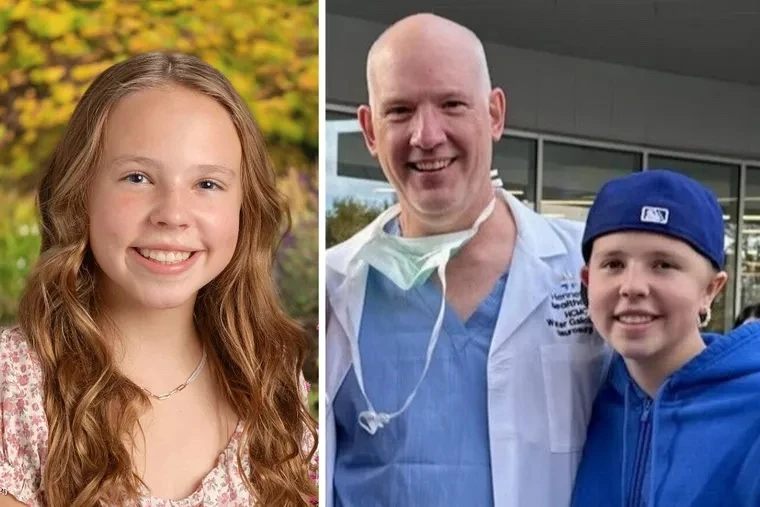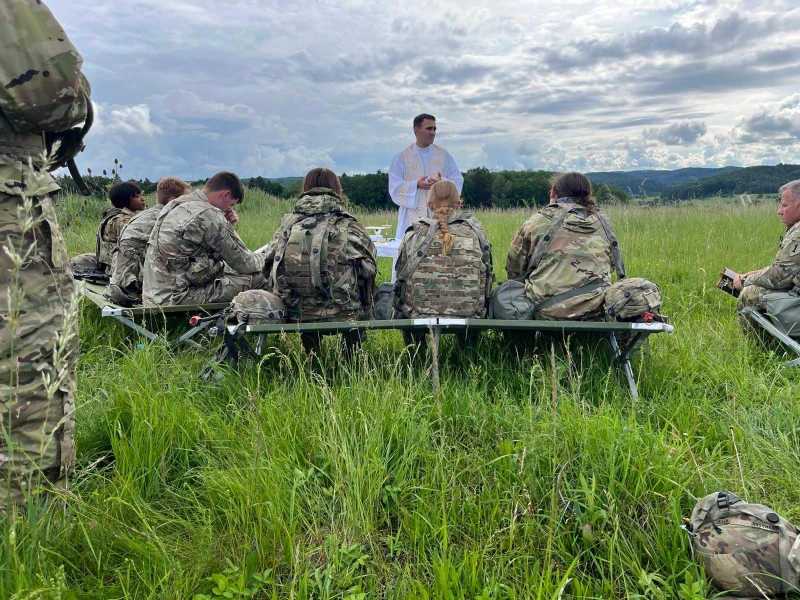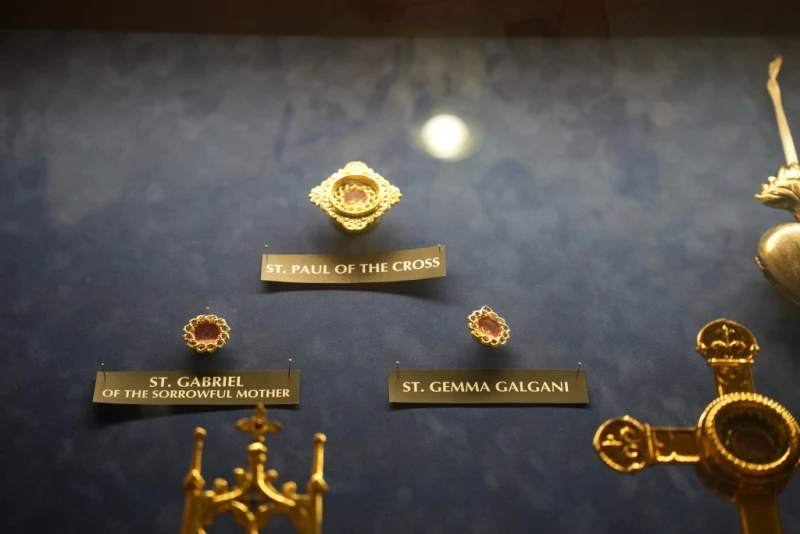

null / Credit: Kara Monroe via Flickr (CC BY-NC-SA 2.0)
CNA Staff, Nov 23, 2025 / 06:00 am (CNA).
As Advent quickly approaches and the hustle and bustle of the holiday season begins to make its way into our lives, here are five resources to help you prepare to welcome Jesus this Christmas.
From Ascension:
Join Father Mike Schmitz this Advent for “Waiting Well: Advent with Fr. Mike Schmitz” on the Ascension app.
Beginning Nov. 30, a 26-day video series will guide viewers on becoming aware of how God is shaping them through seasons of waiting and how to wait well. Each day a five-minute video will be released and feature a reflection from Schmitz that unpacks the daily Mass reading as well as Scripture versus, catechism excerpts, and reflection questions to encourage participants to go deeper into the meaning of Advent.

Schmitz’s weekly homily videos during Advent are part of the “Waiting Well” series and available for free on YouTube. However, the daily reflections will only be available on the Ascension app with a subscription or free trial.
This year’s video reflections will also be accompanied by the “Waiting Well” printed journal for individuals, parishes, and small-group study. It is designed to help readers slow down for 15 minutes a day as they prepare to meet Christ in the manger. Each day includes a word or Scripture verse to pray with, a reflection, and a prompt to write down your thoughts and insights.
From Hallow:
Hallow’s annual “Advent Prayer Challenge” is back once again. Beginning Dec. 1, “Pray25: Be Still” features Jonathan Roumie; Chris Pratt; Gwen Stefani; Father John Burns; Mother Natalia; Sister Miriam James Heidland, SOLT; and Father Pierre Toussaint, CFR. This Advent, listeners are invited to discover deeper stillness amid the chaos of the holiday season, just like the Blessed Mother did that first Christmas.
Roumie and Heidland will lead reflections on “The Reed of God” by Caryll Houselander, while Pratt will guide sessions on “The Ruthless Elimination of Hurry” by John Mark Comer. Stefani and Mother Natalia will guide sessions focusing on being still, using the lives of saints as inspiration. Burns will guide listeners through sessions of imaginative prayer and Toussaint will offer homily reflections each Sunday during Advent.
From Blessed Is She:
Blessed Is She has Advent devotionals for the whole family this year — women, men, and children. “In Time: An Advent Devotional for Women” invites readers to reflect on God’s continuous presence in our lives. Written by Claire Dwyer, this devotional helps women see that waiting is filled with God’s loving action.
“Feast: An Advent Devotional for Men” is written by Paul George, rooted in Scripture, and inspired by the story of the prodigal son. This devotional invites men to return to God the Father with courage, humility, and hope. It also aims to encourage those seeking renewal, healing, and deeper faith during Advent. Both the devotionals for men and women include daily Scripture readings, prayer, and reflection.
Lastly, “Watch and Wait: A Kids Advent Devotional” written by Olivia Spears helps kids prepare for Christmas with daily prayers, reflections, and simple Scripture-based activities. This devotional teaches children to wait with hope and joy as they prepare for the birth of Christ. It is recommended for children older than 7 years old.

From the Augustine Institute:
The Augustine Institute is inviting Catholics to enter into the Advent season with renewed purpose and joyful expectation with a new video series titled “How To Advent.”
The video series will consist of four 12- to 15-minute-long episodes that explore the beauty and meaning of Advent traditions in an engaging and meaningful way and highlight a different cherished Advent tradition — the Advent calendar, Advent wreath, Jesse Tree, and Nativity scene. The video series is available on Formed.
From EWTN’s Religious Catalogue:
The EWTN Religious Catalogue offers a wide variety of Advent devotionals including “Encountering Emmanuel: A Guided Advent Journal for Prayer and Meditation” by Heather Khym, cohost of the “Abiding Together” podcast, and “The True Gifts of Christmas” by Megan Alexander, which takes readers on a journey through the deeper meaning of our most cherished Christmas traditions. (Editor’s note: EWTN is CNA’s parent company.)
Read More







![CNA explains: Why does the Catholic Church prohibit ‘gay marriage’? #Catholic
null / Credit: Daniel Jedzura/Shutterstock
CNA Staff, Nov 17, 2025 / 06:00 am (CNA).
Slightly over 10 years after it redefined marriage to include same-sex couples, the U.S. Supreme Court on Nov. 10 declined to revisit that controversial decision, upholding at least for now its ruling in Obergefell v. Hodges that made “gay marriage” the law of the land.A decade after that ruling, nearly a million same-sex couples in the U.S. are participating in what the law now defines as marriage. Yet the Catholic Church has continued to affirm the definition of marriage as being exclusively a union between a man and a woman. That has been the prevailing definition of marriage around the world for at least about 5,000 years of human history, though many societies have allowed polygamy, or multiple spouses, in various forms. The same-sex variant of marriage, meanwhile, only became accepted in recent decades. The Church has held since its beginning that marriage is strictly between one man and one woman. The Catechism of the Catholic Church directs that marriage occurs when “a man and a woman establish between themselves a partnership of the whole of life.” It is “by its nature ordered toward the good of the spouses and the procreation and education of offspring.”Church Fathers and theologians from the earliest days of Catholicism have consistently upheld that marriage is meant to be a lifelong, permanent union between one man and one woman, with St. Augustine explicitly naming “offspring” as one of the blessings of marriage, along with “fidelity” and “the sacramental bond.”Gay marriage a ‘misnomer’ by Church teachingJohn Grabowski, a professor of moral theology at The Catholic University of America, told CNA that marriage in the Catholic Church’s teaching is based on “unity, indissolubility, and [is ordered] toward life,” or the begetting of children.“Those criteria can only be met in a union between a man and a woman,” he said. “They cannot be met in a union between two men and two women. ‘Gay marriage’ is thus a misnomer in the Church’s understanding.”The Supreme Court’s redefinition of marriage, Grabowski argued, was an act of “judicial fiat” rather than a recognition of what marriage actually is. He said the high court was functioning more as a “cultural barometer” reflecting an erroneous shift in perception on what marriage is.“It would be similar to if the court passed a rule saying we could call a square a circle,” he said. “It’s just not based on the reality of the natural world.”The Obergefell ruling came after years of LGBT activist efforts to redefine marriage both within individual states and at the federal level. Advocates had argued that there was no meaningful reason to restrict marriage to opposite-sex couples and that to do so constituted discrimination. Many critics have claimed that the Church’s broader teaching on marriage actually left the door open for same-sex couples to marry — for instance, they argued, by allowing opposite-sex couples to marry even if one or both of the spouses are infertile, the Church implicitly divorces biological childbearing from marriage itself. Grabowski acknowledged that the Church does allow infertile couples to get married (and to stay married if infertility occurs at a later date). But he pointed out that the Church does in fact prohibit marriage for those who are impotent, or constitutionally incapable of intercourse. The key point for the Church, he said, is what St. John Paul II called the “spousal meaning of the body.” The late pope argued that men and women “exist in the relationship of the reciprocal gift of self,” ordered to the communion of “one flesh” of which the Bible speaks in Genesis. The Church’s teaching, Grabowski said, “is based on the natural law. It tells us that the way God designed us is for the good of our flourishing, both as individuals and as the good of society.”Though marriage advocates have continued to criticize the Supreme Court’s decision over the past decade, others have at times suggested a pivot away from directly challenging it at the legal level. In 2017, for instance, Winona-Rochester, Minnesota, Bishop Robert Barron affirmed his opposition to gay marriage but questioned “the prudence and wisdom” of attempting to legislatively outlaw it at that time. The bishop suggested instead that “personal witness and education” were better tools for the current political climate.Grabowski acknowledged that one “could say, realistically, the ship has sailed and the political question is dead.”“But that’s a political judgment,” he said. Catholics should not lose sight of the goal to reestablish correct laws on marriage, he argued.“In terms of something to hope for, pray for, and to the degree that we’re able to, work for it — that’s something Catholics should aspire to.”](https://unitedyam.com/wp-content/uploads/2025/11/cna-explains-why-does-the-catholic-church-prohibit-gay-marriage-catholic-null-credit-daniel-jedzura-shutterstockcna-staff-nov-17-2025-0600-am-cna-slightly-over-10.webp)



![Preparing for death with the Sister Servants of Mary #Catholic
The Sister Servants of Mary hold a procession with the statue of Our Lady of the Assumption at Mary Health of the Sick Convalescent Hospital in Newbury Park, California. / Credit: Photo courtesy of the Servants of Mary, Ministers to the Sick
CNA Staff, Nov 2, 2025 / 06:00 am (CNA).
When a 93-year-old Catholic father from New Orleans had a stroke, he knew he was prepared to die.Clinton Jacob attended adoration and Mass daily and was “rarely without a prayer book or rosary in hand,” according to his daughter, Kim DeSopo.“[He] never spoke of death with fear or sadness,” she told CNA. “He would simply say, ‘I’ll be going home.’”But not everyone feels prepared for death.The Servants of Mary, Ministers to the Sick, is a Catholic community of sisters who dedicate their lives to caring for the sick and dying in New Orleans and around the world. As nurses, they are at the bedside of the dying through the long nights, whether their patients are lifelong Catholics or have never thought about religion.The sisters often encounter patients as well as family members who are struggling to accept “an illness or imminent death,” Sister Catherine Bussen, a Servant of Mary, told CNA.“Many times, there is a need for reconciliation within the family, for a return to their faith, for acceptance of their condition, etc.,” Bussen said.As medical professionals, the sisters provide physical treatment, but they also walk with their patients throughout their illnesses, encouraging patients and families “always with the hope of eternal life,” Bussen said. DeSopo, Jacob’s daughter, called the sisters for support. The next day, Bussen arrived at their doorstep, and every night for two weeks, she sat at Jacob’s bedside. Bussen’s presence was “a gift,” DeSopo said. “Sister Catherine brought peace and calm into a time filled with stress and sorrow.”“Her prayers, patience, and care provided comfort not only to my father but also to my mother, who could finally sleep knowing someone trustworthy and compassionate was by his side,” DeSopo said, recalling Bussen’s “selfless dedication” and “unwavering faith.” Bussen was with Jacob when he died on Sept. 26, 2024. She prepared his body, cleaning him and sprinkling him with holy water, and then prayed with his wife and daughter.“I will never forget the care and dignity she gave him, even after his final breath,” DeSopo said.Sister Catherine (left) and Sister Dorian Salvador (right) pray for the soul of Kim DeSopa’s father on Oct. 1, 2024, at St. Clement of Rome Church in Metairie, Louisiana. Credit: Photo courtesy of Kim DeSopa and Sister CatherineMary at the foot of the cross “I was sick and you visited me.”This Scripture verse, Matthew 25:36, summarizes the charism of the Servants of Mary, according to Bussen. When they care for the sick, they care for Christ.The sisters will care for anyone in need, preferably within the sick person’s own home. In those who are suffering, the sisters “discover Jesus carrying his cross,” Bussen explained. “By caring for the sick, we believe that we are caring for Christ himself, who still suffers today in the suffering mystical body of Christ,” she said.Sister Angélica Ramos cares for Mrs. Hura, a resident of Mary Health of the Sick Convalescent Hospital in Newbury Park, California. Credit: Photo courtesy of the Servants of Mary, Ministers to the SickFounded in Madrid, Spain, in the 1800s, the sisters care for the sick and dying in Louisiana, Kansas, and California as well as throughout Central and South America, Spain, France, England, Italy, Cameroon, the Philippines, and Indonesia. They run a hospital for the poor in Bamenda, Cameroon, as well as two missionary houses in Oaxaca, Mexico.The sisters look to Mary as an example as they accompany those who are suffering.“Although we are not able to take away someone’s cross, we are present to them, offering all to the Father, like Mary did at the cross of Jesus, that all suffering may be redemptive and fruitful,” Bussen said.“Every one of us sisters would tell you that it is an absolute privilege to be able to enter into the intimacy of a family’s home, listening to the dying, praying with them, and encouraging them on the final stage of their journey as their soul passes into eternity,” she said.Sister Servants of Mary Fatima Muñoz and Carmela Sanz (front) celebrate a May crowning in Kansas City, Kansas. Credit: Photo courtesy of the Servants of Mary, Ministers to the Sick“Our Catholic Christian faith is a beautiful comfort during these times because it is all about looking forward to the promised life to come, the whole goal of our lives, eternal life,” Bussen said.One woman from New Orleans received news no one wants to hear — she had a terminal illness. Though she was not religious, she knew she needed help and did not know who else to turn to, so she called the Servants of Mary.As they cared for her and helped her deal with her terminal diagnosis, the sisters learned the woman was “completely alone in the world,” said Bussen, who took care of her. Other people from the surrounding Catholic community volunteered to stay with her.During that time, the woman found a home in the Catholic Church and received the sacrament of baptism.Her “anxiety was transformed into peace,” said Bussen, who was with her as she died.“As the end drew near, she had a new faith family,” Bussen said. “She was no longer alone.”Remembering the dead The life of a sister Servant of Mary is “contemplative in action.” The sisters unite “our prayer life with our work — going about what we are doing, in all the business of daily life, in a prayerful spirit,” Bussen said.The sisters have time set aside for prayer and work, “but these two aspects cannot be separated from one another,” she continued. “The grace and light received in prayer flows into our work and ministry, and everything we experience in our ministry is taken to prayer.”The Servants of Mary, Ministers to the Sick care for the sick and the dying. Credit: Photo courtesy of the Servants of Mary, Ministers to the SickThroughout the year, the sisters take special care to remember the dead. In November especially, Bussen said the sisters “remember all our patients who have died with us by placing their names in our chapel and offering Masses for their eternal happiness.”“Even after a patient has passed,” she said, “and they no longer need physical care, our ministry continues by praying for their soul.”](https://unitedyam.com/wp-content/uploads/2025/11/preparing-for-death-with-the-sister-servants-of-mary-catholic-the-sister-servants-of-mary-hold-a-procession-with-the-statue-of-our-lady-of-the-assumption-at-mary-health-of-the-sick-convalescent-h.webp)





























![Faith-based ministries discuss how to further pro-life mission #Catholic
Kat Talalas, Amy Ford, Christopher Bell, and Sister Maria Frassati, SV, speak at the Leading with Love Conference at The Catholic University of America in Washington, D.C., on Oct. 8, 2025. / Credit: Tessa Gervasini/CNA
Washington, D.C., Oct 9, 2025 / 12:55 pm (CNA).
Pro-life leaders from across the country gathered this week to discuss how faith-based ministries are helping to cultivate a society that promotes human dignity and how others can advance the cause.The Leading with Love Conference at The Catholic University of America (CUA) in Washington, D.C., was sponsored by the Human Life Foundation and the Center for Law and the Human Person at The Catholic University of America’s Columbus School of Law. It was aimed at “empowering Christians to cultivate a culture of life within their local communities.”Jennie Bradley Lichter, president of the March for Life Education and Defense Fund, spoke to attendees Oct. 8 about the power of faith-based ministries, including The Guadalupe Project. Lichter founded the initiative in 2022 to provide resources and encouragement to parents within the CUA community.To cultivate this encouragement, we must figure out how we can “create more of a revolution of love,” Lichter said. “Christ started this revolution of love, but it’s now up to each one of us in our particular time and place.”“Caring for unborn babies and their mothers is one of the most urgent challenges of our time, Lichter said. “Six out of 10 women who have chosen abortion would have preferred to choose life if they had the emotional and financial support they felt necessary.” The Guadalupe Project’s goal was to combat this by “[making] sure every woman on campus knows that resources exist and knows exactly how to find them,” Lichter said. “It’s meant to support all parents on campus, not just students, and not just mothers in unexpected or challenging circumstances.”“We wanted to foster a culture on campus where each life is celebrated, knowing that a positive, vibrant, and joyful culture of life is truly life-giving in so many ways,” Lichter said. The initiative “revamped all of the university’s pregnancy resource materials for students” and created “a poster campaign, including one designed specifically for the men’s dorms,” Lichter said.It also promoted the placement of stickers in every women’s restroom stall on campus with a QR code leading to these pregnancy materials. The campus started allotting more maternity and paternity leave, designating maternity parking spots on campus, providing free diapers and wipes at the campus food pantry, holding maternity clothing drives, and “affirming the goodness of family life and that new babies are a moment to celebrate,” Lichter said.The 2026 theme for the March for Life is “Life Is a Gift,” Lichter said. The initiative helps carry that out, because “life is something to be celebrated.” She added: “[Life] is not a burden for which someone needs support, or not solely that. It is really a cause for celebration.” Faith-based communities can use The Guadalupe Project as “prototype,” Lichter suggested. She shared that other universities have reached out to talk about the initiative as they were inspired to consider doing something similar.“We need to make sure that pregnant women never reach the point of despair that drives them into the arms of the abortion clinics,” Lichter said. “We need to meet that moment of loneliness, fear, or emptiness with encouragement and empowerment.”Hopes and suggestions for faith-based ministries Other leaders from prominent pro-life ministries discussed what gives them hope for the future of the pro-life movement, including Kat Talalas of Walking with Moms in Need, Amy Ford of Embrace Grace, Christopher Bell of Good Counsel Homes, and Sister Maria Frassati of the Sisters of Life.Talalas, who is the assistant director of pro-life communications for the U.S. Conference of Catholic Bishops, said Walking with Moms in Need started five years ago but has already reached countless communities. The parish-based initiative is “to the point where we don’t even know a lot of the time what new diocese or parish is starting a Walking with Moms in Need, what new lives are being saved, [and] what new women are being accompanied,” Talalas said. “It’s taken on a life of its own. That’s the work of the Holy Spirit — the Holy Spirit convicting hearts.”“God guides us, we have each other, and we’re not alone. Just as we tell [mothers] that they’re not alone, we’re not alone in this movement. So what’s giving me hope is seeing the Holy Spirit catch fire and individual people saying: ‘I want to start talking with moms in need,’ and women saying: ‘I can do this,’” Talalas said. Talalas said the work all begins with prayer. “It’s sitting in the presence of the love of God, letting him love you, and seeing how the Holy Spirit convicts you … It begins with that individual conviction. If we’re not following God’s law, it doesn’t matter what we’re doing.”Ford, who leads Embrace Grace, which provides mothers support through local churches, said she has “noticed there’s a lot of people that seem like they have more of an open heart about Christianity, about spirituality … especially with the younger generation.” She added: “I think that’s something we can all have hope about.”To get involved, Ford said people need to carry out “the good works that God’s called us to do.” She posed the question: “What strengths and gifts did God put inside each of you that you can do?” While Bell’s ministry, Good Counsel, provides services including housing for homeless mothers and children and post-abortion healing services, he said every person can help by simply praying. He specifically called on people to pray in front of an abortion center. “If you have done it, do it again. If you’ve never done it, just go ... You don’t have to say anything. You didn’t have to look up. You don’t have to open your eyes. But your presence will mean the world,” Bell said. “The babies who will die there that day will know that you loved them … That’s the most important thing to do.”Sister Maria Frassati shared that “we could really grow in having more faith in what [God] is doing.”“The truth is that God is actually really working in so many ways,” she said. “God is faithful, and that really gives me a lot of hope that nothing that you give is ever wasted. Even if you walk with a woman who’s not receptive, there’s really no gift that has been offered to him that he has not kept sacred and precious in his heart.”](https://unitedyam.com/wp-content/uploads/2025/10/faith-based-ministries-discuss-how-to-further-pro-life-mission-catholic-kat-talalas-amy-ford-christopher-bell-and-sister-maria-frassati-sv-speak-at-the-leading-with-love-conference-at-the-ca.webp)
